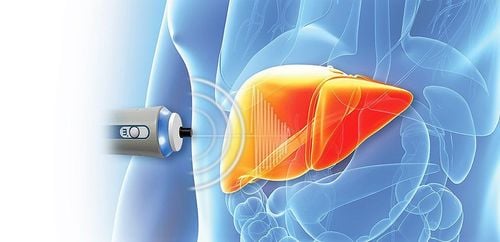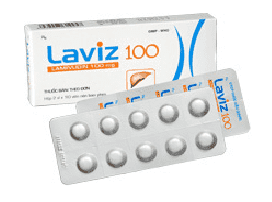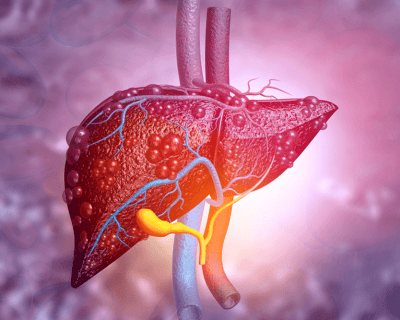This is an automatically translated article.
The article was professionally consulted by Specialist Doctor I Vo Thi Thuy Trang - Gastroenterologist, Department of Medical Examination & Internal Medicine - Vinmec Danang International Hospital.If you have cirrhosis, this means that the condition is causing scar tissue to gradually replace healthy liver cells. Cirrhosis often occurs over a long period of time because of infection or alcoholism. Although liver damage is irreversible, if the disease is detected and treated early, treatments can control the condition.
1. Signs of cirrhosis
The liver is an organ about the size of a ball that performs many important tasks. The liver filters toxins from the blood, produces enzymes that help you digest food, stores sugars and nutrients, and helps you fight infections. Every time your liver is damaged, it repairs itself and forms scar tissue. When too much scar tissue builds up, this organ cannot function properly.When in the early stages of cirrhosis, the person may not have any symptoms. But as time goes on, and the liver damage gets worse and worse, you may notice some signs of the disease, such as:
Fatigue No appetite and weight loss Nausea You also may bleed or bruise easily. In addition, you may experience swelling in your legs or abdomen. You may also notice changes in your skin, such as:
Jaundice (when your skin and eyes turn yellow) Itching Like a spider's web appearing on your skin Redness in the palms of your hands or whiten your nails You may have problems with concentration or memory or a change in the way you think. If you are a woman, you can stop your period. If you are a man, you may lose your sex drive, start growing breasts, or develop problems in your testicles. Some other symptoms you may experience with cirrhosis include:
Vomiting blood Severe muscle pain Brown urine Fever Enlarged spleen Bone disease, which makes bones more fragile Not everyone People with cirrhosis have all of these symptoms, and these symptoms can also be a sign of another health problem.
2. Causes of cirrhosis

Drinking too much alcohol or being addicted to alcohol Obesity, which increases the risk of cirrhosis Having hepatitis B or hepatitis C for a long time Several other factors also put you at risk for cirrhosis, including:
Cystic fibrosis Something that makes it hard for your body to process sugar Too much iron builds up in the body Wilson's disease, storage too much copper in the liver Autoimmune diseases that cause the body to attack liver cells Blockage of the bile ducts, which carry digestive enzymes from the liver to the intestines Inherited digestive disorders Certain infections, including syphilis and Brucellosis Reactions adverse reactions to certain medications.
3. Diagnosis and Stages of Cirrhosis
Since the symptoms of cirrhosis often don't show up in the early stages, you may not find out you have the disease until you've had a routine check-up. Your doctor will ask you about your alcohol use and medical history. Your doctor will also order a test to see if your liver is larger than normal.If cirrhosis is suspected, the doctor will assign the patient to perform a blood test. Blood test results will show how well the liver is working, such as:
High levels of liver enzymes Accumulation of bilirubin, which is formed from the metabolism of heme. Heme iron is derived from hemoglobin and is found in animal-based foods such as chicken and red meat. Low blood protein levels Abnormal blood counts Viral infection Antibodies appear when you have autoimmune liver disease Your doctor may also do imaging tests of your abdomen, like an MRI or an ultrasound. You may also be ordered to have a biopsy, which removes a sample of liver tissue to see the extent of liver damage and potentially find out the cause of liver disease.
Your doctor can also tell you what stage your cirrhosis is in. If your doctor tells you that your cirrhosis is still compensated, it means your liver is scarred, but it can still do many of the main jobs. You may not notice any symptoms occurring at this point.
If your doctor says you have decompensated cirrhosis, your liver is already severely scarred and not working well. You may see the appearance of many symptoms.
4. Treatment of cirrhosis

Stop drinking alcohol now. Your doctor can recommend an alcohol addiction treatment program for you. Losing weight if you're obese, especially if you have cirrhosis, is caused by fatty deposits in the liver. Take medicine if you have hepatitis B or C. You can also take medicine to ease symptoms such as itching, fatigue, and pain. Your doctor will also treat any possible complications with cirrhosis with certain measures, such as:
Low-sodium diet: This can help control swelling in the liver. Your doctor may also ask you to take medication to address the condition. If your liver has a severe build-up of fluid, it may need to be drained. Blood pressure medications: These can reduce bleeding inside your body caused by swollen and broken blood vessels. You may need surgery if you have severe varicose veins. Birth and vaccination: Other infections can be treated and prevented. Your doctor may also prescribe medications to reduce toxin buildup, if that's a problem for you. And if you have inflammation in your liver, steroids can be used. In addition, you will also likely be ordered to have regular tests to make sure you do not have liver cancer, which can be a complication of cirrhosis.
If your cirrhosis is severe, you may need a liver transplant. You will likely need to wait for a new liver from a deceased donor. Sometimes people with cirrhosis can take a part of a donor liver from a living person.
Usually, the damage to the liver caused by cirrhosis is irreversible. But your liver can still function and recover even if two-thirds of the damage has been destroyed or removed.
If cirrhosis is caused by long-term hepatitis, treating the infection can reduce the risk of more problems if damage is found early. Most people whose cirrhosis is found at an early stage can live a healthy life.
If you are obese or have diabetes, losing weight and keeping your blood sugar under control can reduce the damage caused by fatty liver disease. If the damage is caused by alcohol abuse, you may have better control of your cirrhosis if you stop drinking right away.
5. Prevention of cirrhosis

Avoid risky behaviors that can lead to hepatitis B and hepatitis C infections. Do not share needles when using illicit drugs. method and use condoms when you have sex.
Always make sure to maintain a healthy weight and keep up-to-date immunization programs.
Please dial HOTLINE for more information or register for an appointment HERE. Download MyVinmec app to make appointments faster and to manage your bookings easily.
Reference source: webmd.com













